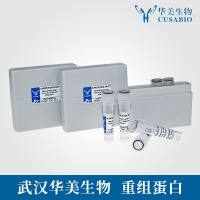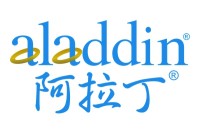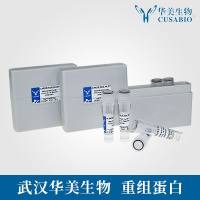Isolated Blood Vessel Assays
互联网
- Abstract
- Table of Contents
- Materials
- Figures
- Literature Cited
Abstract
One of the most versatile and accessible types of isolated tissue used in pharmacology is the isolated blood vessel. Arteries and veins contain a wide range of receptor types mediating contraction, relaxation, and endothelial function. The protocols in this unit describe methods for measuring agonist response as changes in blood vessel tension.
Table of Contents
- Basic Protocol 1: Ring Preparations of Blood Vessels
- Alternate Protocol 1: Spiral Strip Preparations of Blood Vessels
- Basic Protocol 2: Perfused Preparations of Blood Vessels
- Commentary
- Figures
Materials
Basic Protocol 1: Ring Preparations of Blood Vessels
Materials
Alternate Protocol 1: Spiral Strip Preparations of Blood Vessels
Basic Protocol 2: Perfused Preparations of Blood Vessels
Materials
|
Figures
-

Figure 4.4.1 Anatomy of the blood vessel wall. The inner lumen is lined with a layer of endothelial cells and the outside of the vessel is covered with connective tissue. Smooth muscle cells are arranged concentrically. View Image -
Figure 4.4.2 Ring preparations of blood vessels. A section of cannulated vessel is cut and the cannula mounted over the ends of the two hooks. The vessel is slid down the cannula and pushed onto the horizontal portion of the hooks. The hooks are then separated and mounted with opposing tension. View Image -
Figure 4.4.3 Spiral strip preparations of blood vessels. (A ) Forceps are used to pull the strip away from the cannulated vessel as a diagonal (bias) cut is made. (B ) Orientation of smooth muscles in a splayed blood vessel. The two strips shown are cut at a steep (I) or shallow (II) angle. The force of contraction along the axis of the strip is a function of the sine of the angle of cut. (C ) Relationship between the force of contraction and the vectorial force of contraction. Shallow angles of cut diminish the force along the axis of the strip, making it difficult to monitor contraction of the muscle cells. View Image -
Figure 4.4.4 Perfused blood vessels. (A ) Holder for perfused vessels containing two stainless steel cannulae, one of which is mounted on a sliding Plexiglas arm to accommodate vessels of different length. (B ) Perfusion fluid entering the top cannula can either mix with the fluid bathing the tissue through an overflow tube or be kept separate. (C ) Schematic diagram of a perfusion system. Oxygenated, warmed perfusion fluid is pumped through the vessel at a constant rate. A pressure‐sensing transducer is placed at point P between the pump and the vessel. View Image -
Figure 4.4.5 Relative resistance of perfusion systems for blood vessels. (A ) A system in which the resistance of the perfusion tubing exceeds that in the blood vessel. (B ) An optimum system where the maximal resistance is in the blood vessel, not the perfusion tubing. Under these conditions, virtually any constriction of the blood vessel results in a detectable change in pressure. (C ) The relationship between the radius of the blood vessel and the pressure according to Poiselle's equation (Equation ). If the system perfusion pressure is determined at point P s by the resistance of the tubing, then constrictions in vessels of radius ≥2.5 mm are not detected. View Image -
Figure 4.4.6 Relative contractile response to agonists in rings of rabbit aorta cut from various regions of a vessel. While the contractile response to histamine is relatively stable over the length of the vessel, the response to acetylcholine declines with distance from the aortic arch (data from Altura and Altura, ). View Image -
Figure 4.4.7 Relationship between blood vessel radius and pressure at different flow rates. Conditions are optimal with the system operating in a steep portion of the pressure/radius curve (region A); here, small changes in radius result in a large change in pressure. If the radius of a particular blood vessel places the pressure in an unresponsive region of the pressure/radius curve at a particular flow rate (point B), an increase in flow moves the system to another curve where pressure is more responsive to changes in radius (region C). View Image -
Figure 4.4.8 Drug introduction into a perfused system by constant perfusion or bolus injection. (A ) Temporal rise in drug concentration when the concentration outside the receptor compartment instantaneously reaches equilibrium concentration. The increase of the drug concentration within the receptor compartment is not instantaneous, but increases over time. (B ) Waning of a sharp initial peak in concentration of a bolus injection at distal points in the perfusion system. The peak height diminishes and the width increases by the time the drug reaches the preparation. (C ) Effect of restricted diffusion into the receptor compartment on drug concentration at the receptor during a bolus injection. There is a net decrease in the maximal concentration of drug reaching the receptors. View Image
Videos
Literature Cited
| Literature Cited | |
| Altura, B.M. and Altura, B.T. 1970. Heterogeneity of drug receptors in different segments of rabbit thoracic aorta. Eur. J. Pharmacol. 12:44‐52. | |
| de la Lande, I.S. and Jellett, L.B. 1972. Relationship between the roles of monoamine oxidase and sympathetic nerves in the vasoconstrictor response of the rabbit ear artery to norepinephrine. J. Pharmacol. Exp. Ther. 180:47‐55. | |
| de la Lande, I.S. and Rand, M.J. 1965. A simple isolated nerve‐blood vessel preparation. Aust. J. Exp. Biol. Med. Sci. 43:639‐656. | |
| Hooker, C.S., Calkins, P.J., and Fleisch, J.H. 1977. On the measurement of vascular and respiratory smooth muscle response in vitro. Blood Vessels 14:1‐11. | |
| Langendorf, O. 1895. Untersuchungen am uberlebenden Saugethierherzen. Pflug. Arch. Ges. Physiol. 61:291‐332. | |
| Key Reference | |
| University of Edinburgh Staff, Department of Physiology. 1968. Pharmacological Experiments on Isolated Preparations. E. & S. Livingstone Ltd., Edinburgh. | |
| A comprehensive volume written by specialists in this field, detailing the preparation of numerous blood vessels. |







